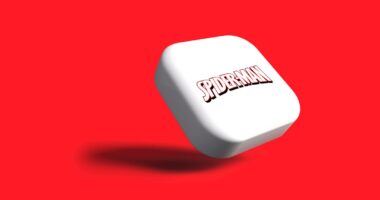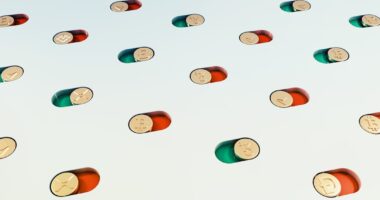NFT (non-fungible token) art is a digital asset that represents ownership or authenticity of a unique item or piece of content using blockchain technology. Unlike fungible cryptocurrencies such as Bitcoin or Ethereum, NFTs are non-fungible, meaning each one is unique and cannot be exchanged on a like-for-like basis. When an artist creates an NFT, they generate a digital certificate of ownership for a specific piece of art, which can be a digital painting, animation, video, or other forms of digital content.
This certificate is stored on a blockchain, a decentralized and distributed digital ledger that records transactions across a network of computers. The blockchain ensures that the ownership and provenance of the NFT art can be verified and remains tamper-proof. Purchasing an NFT involves buying the ownership rights to the digital artwork, along with a unique token that proves its authenticity and scarcity.
This system allows artists to monetize their digital creations in ways that were not possible before the advent of blockchain technology and NFTs. NFT art has created new opportunities for artists to sell their digital works and has established a new market for collectors and art enthusiasts to acquire unique pieces of digital art. This technology has significantly impacted the art world by revolutionizing the way digital art is bought, sold, and appreciated.
Key Takeaways
- NFT art is a digital asset that represents ownership or proof of authenticity of a unique piece of art, using blockchain technology.
- When choosing a platform for NFT art creation, consider factors such as fees, user interface, community support, and security features.
- To create unique and marketable NFT art, focus on originality, storytelling, and engaging with your audience through social media and other platforms.
- Navigating the legal and copyright aspects of NFT art involves understanding intellectual property rights, licensing, and potential disputes.
- Marketing and selling your NFT art requires building a strong online presence, leveraging social media, and participating in NFT marketplaces and auctions.
- Building a community and network as an NFT artist involves engaging with other artists, collectors, and enthusiasts, and participating in events and collaborations.
- Staying informed and adapting to the evolving NFT art market is crucial for success, as trends, technologies, and regulations continue to change.
Choosing the Right Platform for NFT Art Creation
When it comes to creating NFT art, choosing the right platform is crucial for success in the NFT art market. There are several platforms available for artists to mint and sell their NFT art, each with its own set of features, fees, and community. One of the most popular platforms for creating and selling NFT art is OpenSea, which is a decentralized marketplace for NFTs that supports a wide range of digital assets, including art, collectibles, and virtual real estate.
OpenSea allows artists to mint their NFTs for a relatively low cost and provides a user-friendly interface for buyers to browse and purchase NFT art. Another popular platform for NFT art creation is Rarible, which is an NFT marketplace and platform for creating and selling digital collectibles. Rarible allows artists to create and customize their own NFTs using its “create” feature, which includes options for royalties, unlockable content, and limited editions.
Additionally, Rarible has its own native token, RARI, which can be used for governance and staking within the platform. In addition to OpenSea and Rarible, there are several other platforms such as Foundation, SuperRare, and KnownOrigin that cater to specific niches within the NFT art market. It’s important for artists to research and compare these platforms to find the one that best suits their needs in terms of fees, features, community, and target audience.
In conclusion, choosing the right platform for NFT art creation is essential for artists looking to enter the NFT art market. Each platform has its own unique features and community, so it’s important for artists to carefully consider their options before minting and selling their NFT art.
Creating Unique and Marketable NFT Art

Creating unique and marketable NFT art is essential for success in the competitive NFT art market. With the proliferation of digital art and NFTs, it’s important for artists to stand out from the crowd and offer something truly unique and valuable to collectors. One way to create unique NFT art is by experimenting with different mediums and techniques, such as digital painting, 3D modeling, animation, generative art, and virtual reality.
By pushing the boundaries of digital creativity, artists can create one-of-a-kind pieces that capture the attention of collectors and enthusiasts. Another important aspect of creating marketable NFT art is storytelling and concept development. Artists should strive to create a narrative or concept behind their artwork that resonates with their audience and adds value to the piece.
This could involve exploring themes such as identity, technology, nature, or social commentary through the medium of digital art. By infusing their artwork with meaning and depth, artists can attract a wider audience and increase the perceived value of their NFTs. Furthermore, collaboration and community engagement can also play a crucial role in creating marketable NFT art.
By collaborating with other artists or engaging with the NFT community, artists can leverage their networks to reach new audiences and build a loyal fan base. This can involve participating in virtual events, joining artist collectives, or collaborating on projects with other creators to create buzz around their NFT art. In summary, creating unique and marketable NFT art involves experimenting with different mediums, developing compelling concepts, and engaging with the community to stand out in the competitive NFT art market.
Navigating the Legal and Copyright Aspects of NFT Art
Navigating the legal and copyright aspects of NFT art is crucial for artists looking to protect their intellectual property rights and avoid potential legal issues. When creating NFT art, it’s important for artists to understand the implications of copyright law and ensure that they have the necessary rights to mint and sell their digital creations as NFTs. This involves obtaining permission or licensing for any third-party content used in their artwork, such as images, music, or trademarks, to avoid infringing on someone else’s intellectual property rights.
Additionally, artists should consider creating terms of use or licensing agreements for their NFT art to specify how buyers can use and display the digital artwork they purchase. This can help protect the artist’s rights and prevent unauthorized use or reproduction of their NFTs by buyers or third parties. By clearly outlining the terms of use for their NFT art, artists can establish boundaries for how their artwork can be shared or displayed while retaining control over its distribution.
Furthermore, artists should be aware of potential legal issues related to fraud, misrepresentation, or breach of contract in the sale of NFT art. This includes ensuring that the information provided about the artwork is accurate and transparent, such as its provenance, edition size, and any associated rights or royalties. By being transparent and honest in their dealings with buyers, artists can build trust and credibility in the NFT art market while minimizing the risk of legal disputes.
In conclusion, navigating the legal and copyright aspects of NFT art involves understanding copyright law, creating terms of use for NFTs, and being transparent in the sale of digital artwork to protect artists’ intellectual property rights.
Marketing and Selling Your NFT Art
Marketing and selling your NFT art is essential for reaching potential buyers and maximizing the value of your digital creations. With the growing popularity of NFTs, it’s important for artists to develop a marketing strategy that effectively promotes their artwork and attracts collectors. One way to market NFT art is by leveraging social media platforms such as Twitter, Instagram, and TikTok to showcase your artwork, engage with your audience, and build a following.
By sharing behind-the-scenes content, work-in-progress updates, or personal insights into your creative process, you can connect with potential buyers on a more personal level and generate interest in your NFTs. Another effective marketing strategy for selling NFT art is participating in virtual events such as online exhibitions, auctions, or artist talks within the NFT community. By showcasing your artwork in curated virtual spaces or participating in live events, you can reach a targeted audience of collectors who are actively seeking new digital artwork to add to their collections.
This can also provide an opportunity to network with other artists and industry professionals while gaining exposure for your NFT art. Furthermore, offering incentives such as limited editions, unlockable content, or exclusive perks can help drive sales and create a sense of urgency among potential buyers. By creating scarcity or offering additional value through special features or bonuses, you can entice collectors to purchase your NFTs while increasing their perceived value.
In summary, marketing and selling your NFT art involves leveraging social media platforms, participating in virtual events, and offering incentives to attract buyers and maximize the value of your digital creations.
Building a Community and Network as an NFT Artist

Building a community and network as an NFT artist is essential for establishing a strong presence in the NFT art market and connecting with potential buyers and collaborators. One way to build a community as an NFT artist is by engaging with other creators within the NFT space through collaborations, partnerships, or joint projects. By working with other artists or participating in collective initiatives, you can leverage your networks to reach new audiences while building meaningful relationships within the community.
Additionally, participating in online forums, Discord channels, or virtual events dedicated to NFT art can help you connect with like-minded individuals who share an interest in digital creativity. By actively engaging in discussions, sharing your knowledge or experiences, and providing support to others in the community, you can establish yourself as a valuable member of the NFT art scene while expanding your network. Furthermore, hosting virtual exhibitions or events dedicated to your artwork can help you showcase your creations while fostering a sense of community among your audience.
By creating immersive experiences or interactive showcases for your NFT art, you can engage with collectors on a deeper level while building anticipation for your future releases. In conclusion, building a community and network as an NFT artist involves collaborating with other creators, engaging in online communities dedicated to NFT art, and hosting virtual events to connect with potential buyers and collaborators.
Staying Informed and Adapting to the Evolving NFT Art Market
Staying informed and adapting to the evolving NFT art market is crucial for artists looking to stay ahead of trends and changes within the industry. With the rapid growth of the NFT space, it’s important for artists to stay updated on new developments in technology, platforms, regulations, and market dynamics that may impact their work. This involves staying informed about emerging blockchain technologies, new platforms for minting and selling NFTs, changes in copyright law related to digital assets, or shifts in collector preferences within the NFT art market.
Additionally, adapting to the evolving landscape of the NFT art market requires flexibility and openness to experimentation with new formats or concepts that resonate with current trends or collector interests. By staying attuned to popular themes or styles within the NFT community while remaining true to your artistic vision, you can position yourself for success in an ever-changing market. Furthermore, seeking feedback from your audience or peers within the NFT community can provide valuable insights into how you can improve your artwork or adapt your approach to better meet the needs of collectors.
By actively listening to feedback and engaging in constructive dialogue with others in the industry, you can gain valuable perspectives that may inform your creative decisions while fostering a sense of collaboration within the community. In summary, staying informed and adapting to the evolving NFT art market involves staying updated on industry developments, being open to experimentation with new concepts or formats, and seeking feedback from your audience to improve your artwork.
If you’re interested in learning more about the potential career opportunities in the NFT space, check out this article on NFT-Jobs.com. It provides valuable insights into the growing job market within the NFT industry and how aspiring creators can position themselves for success.
FAQs
What is NFT art?
NFT art refers to digital artwork that is tokenized and sold using blockchain technology. Each piece of NFT art is unique and has a digital certificate of ownership.
How do you make NFT art?
To make NFT art, you need to create a digital artwork using software or digital tools. Once the artwork is created, you can mint it as an NFT using a platform that supports NFT creation, such as OpenSea or Rarible.
What are some tips for aspiring NFT art creators?
Some tips for aspiring NFT art creators include:
– Creating unique and high-quality digital artwork
– Researching and understanding the NFT marketplace and platforms
– Building a strong online presence and marketing strategy
– Engaging with the NFT community and networking with other creators
What are some popular platforms for selling NFT art?
Some popular platforms for selling NFT art include OpenSea, Rarible, Foundation, and SuperRare. These platforms allow creators to mint, list, and sell their NFT artwork to collectors.
What are the benefits of creating NFT art?
Creating NFT art allows artists to reach a global audience, receive royalties for resales, and have more control over the distribution and ownership of their digital artwork. NFT art also provides a new way for artists to monetize their work and connect with collectors.





